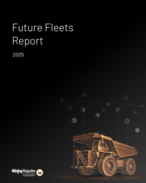This article is 19 years old. Images might not display.
The NRC report was commissioned under a mandate from the US Congress, which is seeking a better method of disposing of coal ash waste, which is already thought to be reaching quantities comparable to a million filled railroad coal cars annually.
The impetus to find better disposal methods is inextricably tied to increasing demand for coal-fired energy in the US, with corresponding increases expected in the volume of coal ash that will need to be disposed of in a regulatory environment with rising standards and penalties for pollution control.
Released on March 1, the NRC report indicated the bulk of US coal ash is disposed of in landfills and surface impoundments, but it is increasingly being used in mine reclamation projects.
Roughly 38% of coal ash residues are used to make cement, wallboard and other products.
The NRC report supported the continued use of some residues in industrial applications as a way to reduce the amount requiring disposal.
The NRC committee in charge of writing the report was chaired by Perry Hagenstein, who is also the president of the Institute for Forest Analysis, Planning, and Policy, based in Wayland, Massachusetts.
“Because the amount of coal combustion residues is large and increasing, we should pursue productive uses for them," said Hagenstein.
“When such uses are not feasible, putting residues in mines as part of reclamation provides an alternative to landfills and surface impoundments, although potential health and environmental risks must be addressed."
The committee also found that storing coal ash in mines could reduce the chances of acids and other contaminants escaping the mine into the environment.
However, concerns over the potential impact on groundwater resources were not able to be addressed directly due to a lack of data on “minefilling”.
Instead the committee made a comparative study based on examining data on adverse environmental effects from surface impoundments and landfill sites with coal ash containing toxic chemicals, leading them to determine that if minefilling was approved as an option, safeguards would have to be put in place to minimise water resources moving through the coal ash.
The report recommended a robust program to monitor mine sites where coal residues have been placed, testing water in wells placed around the mine sites.
Examining current monitoring practices, the committee said the number and placement of wells was generally inadequate, suggesting several factors needed to be taken into account – such as rates of groundwater flow and estimated risks from contamination – to place wells in a manner that yields early data on potential water contamination.
While using coal ash and residue in minefilling is being explored, there is also the question of which agencies should be responsible for monitoring and enforcement issues, and at what level of government.
Under the federal Surface Mining Control and Reclamation Act (SMCRA), states are generally responsible for broadly regulating the management of coal combustion residues during mine reclamation.
However, some states have said that while the SMCRA is general enough to cover the placement of coal ash in mines, it does not provide a framework for regulation of coal ash minefilling should it become a standard practice.
The NRC committee said enforceable federal standards would need to be developed to help state authorities, with sufficient flexibility to adapt to local conditions.
EnvironmentalManagementNews.net























